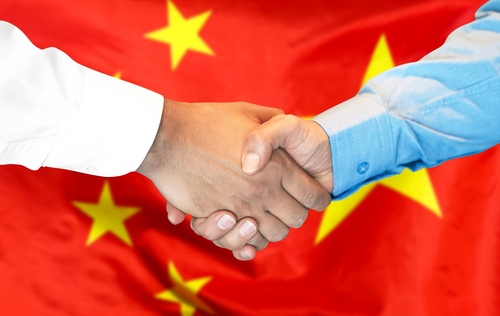Venturing into the diverse Chinese market as a global business mogul is an exciting yet challenging endeavor. Making strategic choices is paramount, and numerous entrepreneurs choose WFOE China, particularly in the manufacturing sector.
However, recent transformations usher in a new era with the emergence of “foreign-invested commercial enterprise,” introducing a set of rules that redefine the game. This WFOE China: Comprehensive Guide for Foreign Investors serves as your compass, demystifying WFOEs, exploring the evolution of these enterprises, and providing invaluable insights into the ever-shifting landscape of Chinese business.

Wholly Foreign-Owned Enterprises (WFOEs) played a crucial role for foreign companies, especially in manufacturing. However, the landscape has shifted with the emergence of “foreign-funded enterprises.” This marks a transformation in foreign investment, requiring adaptation for success.
This new development marks a transformation in the approach to foreign investment in China. Unlike the traditional WFOEs, foreign-funded enterprises introduce a fresh set of rules and regulations, creating a paradigm shift in the dynamics of doing business in China. For international business leaders, adapting to this change is essential to ensuring a smooth and successful transition into the evolving Chinese market.
Understanding WFOEs
Wholly Foreign-Owned Enterprises (WFOEs) were preferred for foreign investors, providing control, especially in manufacturing. Recent changes, marked by the rise of foreign-funded enterprises, require a nuanced approach. Balancing the pros and cons, understanding feasibility studies and market regulations, and considering joint ventures become crucial.
The Emergence of “Foreign-Funded Enterprises”
Wholly Foreign-Owned Enterprises (WFOEs) coexist with “foreign-funded enterprises,” each with unique regulations. Navigating these changes is key, whether opting for a WFOE, a joint venture, or exploring new regulations like encouraged industries.
Navigating WFOEs
Wholly Foreign-Owned Enterprises (WFOEs) act as a gateway for global businesses seeking a substantial presence in China. These entities grant foreign investors a significant level of control, enabling them to navigate their business ventures according to strategic goals.
Especially in manufacturing WFOE setups, this control extends to key aspects such as selecting a legal representative, establishing a bank account, managing foreign exchange, and negotiating lease contracts. Understanding these intricacies is essential for international business leaders aiming to successfully establish and operate in the dynamic Chinese market.
Benefits and Challenges of WFOEs
While WFOEs offer control, challenges include limited government support and a complex liquidation process. Compliance with minimum capital requirements, managing taxes, and conducting thorough feasibility studies are vital steps for success.
The Rise of “Foreign-Funded Enterprises”: New Rules to Learn

The Chinese market evolves, presenting both WFOEs and “foreign-funded enterprises.” Both enable foreign businesses in China, yet the newer option has unique rules. Understanding these changes is vital for a smooth entry.
As the Chinese market advances, foreign-funded enterprises emerge with distinct rules. While they offer global expansion opportunities, comprehending and adapting to new regulations is crucial for international business leaders. Balancing WFOE China’s pros and cons requires strategic decisions, especially in dynamic markets like China.
The intricacies of foreign investment, understanding of the foreign investment law, minimum registered capital, compliance with a business license, and joint reports are integral aspects to consider for a crucially successful venture.
Decoding WFOEs: What’s Inside?

Let’s delve into the meaning of ‘WFOE,’ which stands for ‘Wholly Foreign-Owned Enterprise’—a limited liability company in China where all participants are foreign. It’s akin to being the sole proprietor of your business in China, eliminating the necessity for a local partner. This structure grants significant control, safeguarding your ideas.
A ‘Wholly Foreign-Owned Enterprise’ or WFOE China is a Chinese business entity with exclusively foreign partners, allowing international business leaders autonomy without requiring a local partner.
Despite its advantages, this setup has complexities. WFOEs receive limited government assistance, and closing the business involves navigating through a maze of rules and paperwork. Even with the control and protection offered, foreign businesses must anticipate and overcome challenges when operating with a WFOE in China.
The Financial Landscape: Starting and Running a WFOE

WFOEs didn’t have strict rules about how much money you needed to start, but a recommended registered capital of at least 1,000,000 RMB was advised. Plus, you can only do the specific things you registered for—no going off course!
Setting Up and Closing Down: Your WFOE Journey
Starting a WFOE China requires understanding specific rules. Even though there aren’t super strict rules about the money you start with, having at least 1,000,000 RMB as registered capital is advisable to preempt potential complications. WFOEs must adhere strictly to their registered activities, curtailing their business scope.
Strategic Planning: Navigating the WFOE Journey
Creating a Wholly Foreign Owned Enterprise or WFOE China is like a big journey, with factors like registered capital or how much money you start with playing a big part. Closing down a WFOE can be even trickier and take more time than starting it. So, planning things smartly from the beginning helps you handle the tricky parts better.
Procedural Insights: Steps, Costs, and Adaptations
Starting a Wholly Foreign Owned Enterprise or WFOE China involves steps and costs. Getting help from a consultant might change costs. Thanks to COVID-19, Chinese banks now allow international businesses to open accounts remotely.
Key Considerations for Foreign Investors
As a foreign investor in the Chinese market or WFOE China, navigating legalities, financial landscapes, and regulatory processes is crucial. Key aspects to keep in mind include:
- Legal Structure and Compliance: Understanding the legal structure of your business entity, whether a WFOE in China or a foreign-funded enterprise, is crucial. Compliance with Chinese laws and regulations ensures a smooth operation within the legal framework.
- Business Registration and Licensing: Completing the business registration process and obtaining necessary licenses, like the WFOE China business license, is essential for official recognition and authorization to operate in China.
- Financial Considerations: Managing financial aspects, including minimum registered capital requirements, bank accounts, and capital verification reports, is vital for financial health. Adhering to these regulations ensures a stable and compliant operation.
- Intellectual Property Protection: A potential foreign investor must prioritize the protection of trademarks, patents, and copyrights. Understanding this protection in China is crucial for a successful WFOE venture, aligning with the broader strategy for business activity and future development.
- Human Resources and General VAT Taxpayer Status: Success involves understanding human resource rules, gaining general VAT taxpayer status, and complying with tax and employment laws. Additionally, vital steps include opening an RMB basic account, obtaining approval certificates, managing customs registration, and ensuring a steady cash flow. Employing a certified public accountant plays a key role in financial compliance and preparing effective capital verification reports. These steps are crucial for navigating the complexities of the Chinese market and achieving lasting success in your venture.
Local Authorities and State Administration
The success of your business relies on grasping market regulations, securing necessary approvals, and strategically positioning key roles. An efficient business closure is contingent on the vital role of a liquidation committee. Engaging with local authorities and adhering to state administration guidelines are pivotal for a thriving business operation in China.
Cultivating positive relationships nurtures a supportive business environment. Moreover, fostering transparent communication with relevant authorities and establishing connections with the parent company can profoundly influence the seamless operation of your venture.
Challenges and Strategies for Success

Navigating the Chinese business landscape, whether as a WFOE or a foreign-funded enterprise, presents challenges that require strategic solutions:
1. Overcoming Language and Cultural Barriers
Effective communication and understanding cultural nuances are key to overcoming language barriers. Employing local professionals, using translator apps, and using language experts can facilitate smoother interactions with local authorities and partners.
2. Compliance with Changing Regulations
When setting up a Chinese limited liability company entirely owned by foreign investors, essential considerations involve choosing a Chinese business name, preparing an annual audit report, securing a business license, and collaborating with a Chinese partner. Understanding limited liability companies, addressing resource tax, establishing an official company structure, and navigating the establishment process are equally crucial aspects.
Acquiring a company stamp for essential documentation completes the essential steps for the smooth and compliant operation of your foreign-invested enterprise in China. Each of these factors plays a pivotal role in ensuring the seamless functioning of your WFOE China, contributing to its compliance with local regulations, and fostering a conducive business environment within the Chinese market.
3. Building Strong Partnerships with Local Entities in WFOE China
Forming alliances with local partners is crucial when venturing into wholly owned foreign enterprises. These partnerships provide insights into market dynamics, regulations, and local culture. Close collaboration with local authorities during the registration process ensures adherence to foreign investment laws and secures the business license.
4. Strategic Planning for Future Growth in WFOE in China
Establishing a WFOE in China requires attention to details like registered capital, business scope, and lease contracts. Comprehending minimum capital requirements and following Chinese business laws, such as naming conventions, annual audits, and business licenses, is crucial.
Strategic planning involves considering long-term factors, understanding market trends, identifying growth opportunities, and adapting to evolving business conditions. Seeking professional advice, including certified public accountants, ensures compliance with taxes like corporate income tax, consumption tax, and stamp duty tax.
Wrapping It Up
Embarking on the WFOE China journey is like unlocking a treasure chest, demanding a blend of legal finesse, financial acumen, and cultural fluency. Picture it as a thrilling quest where staying in the know, forging strategic alliances, and dancing with the dynamic business rhythm are your keys to conquering the global economic stage.
This Comprehensive Guide for Foreign Investors isn’t just a map; it’s your trusty companion, unraveling the intricacies and paving the way for an exhilarating and triumphant business adventure in China. So, gear up, explorer; your success story is waiting to be written in the heart of the bustling Chinese marketplace!
